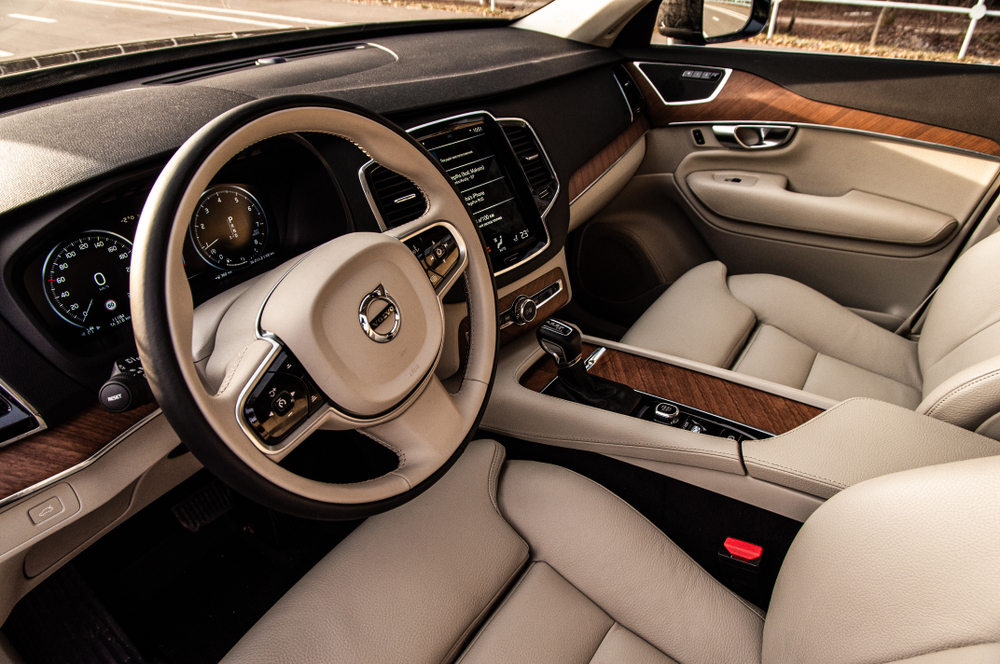Revolutionizing Car Seats: The Dawn of Biometric Comfort Systems
Imagine settling into your car seat, and it instantly adjusts to your body's unique contours, temperature preferences, and even your stress levels. This isn't science fiction—it's the cutting-edge world of biometric comfort systems in automotive seating. As vehicles evolve into sophisticated machines, the humble car seat is undergoing a transformation that promises to redefine our driving experience.

The Evolution of Automotive Seating
Car seats have come a long way since the wooden benches of early automobiles. The 1960s saw the introduction of bucket seats, offering improved lateral support. The 1980s brought power-adjustable seats, while the 1990s introduced memory functions. However, these advancements pale in comparison to the quantum leap that biometric systems represent.
Today’s cutting-edge seats incorporate an array of sensors that monitor everything from body temperature to heart rate. These sensors work in tandem with advanced algorithms to create a responsive environment that adapts in real-time to the occupant’s needs.
The Science Behind Biometric Comfort
At the heart of biometric seating systems lies a complex network of sensors and actuators. Pressure sensors map the distribution of body weight, while thermal cameras detect temperature variations across different body zones. Electrocardiogram (ECG) sensors embedded in the seat fabric monitor heart rate and rhythm, providing crucial data on the driver’s stress levels and alertness.
This wealth of biometric data is processed by sophisticated AI algorithms that can recognize patterns and make predictive adjustments. For instance, if the system detects an increase in heart rate coupled with a shift in posture, it might infer rising stress levels and automatically initiate a gentle massage function to promote relaxation.
Personalized Comfort and Health Benefits
One of the most significant advantages of biometric seating is its ability to offer truly personalized comfort. Traditional memory seats can recall pre-set positions, but biometric systems go further by continuously adapting to the occupant’s changing needs throughout a journey.
For long-distance drivers, these systems can be a game-changer in preventing fatigue and discomfort. By subtly altering seat contours and applying targeted support, biometric seats can encourage better blood circulation and reduce the risk of deep vein thrombosis—a common concern for those who spend extended periods sitting.
Enhanced Safety Through Physiological Monitoring
Beyond comfort, biometric seating systems have the potential to significantly improve vehicle safety. By monitoring vital signs, these systems can detect early signs of driver fatigue or medical emergencies. In cases where a driver’s physiological state indicates impairment, the seat could work in conjunction with other vehicle systems to implement safety measures, such as issuing alerts or even gradually bringing the vehicle to a safe stop.
Moreover, in the event of a collision, biometric seats could potentially adjust their position and firmness to provide optimal protection based on the occupant’s body composition and the nature of the impact. This level of personalized safety was unimaginable just a few years ago.
The Road Ahead: Challenges and Opportunities
While the potential of biometric seating is immense, several challenges must be addressed before widespread adoption becomes a reality. Privacy concerns are paramount, as these systems collect highly personal physiological data. Manufacturers will need to implement robust security measures to protect this sensitive information from unauthorized access or misuse.
There’s also the question of reliability and durability. Automotive environments are notoriously harsh, with extreme temperatures, vibrations, and electromagnetic interference. Ensuring that delicate biometric sensors can withstand these conditions over the lifespan of a vehicle presents a significant engineering challenge.
Cost is another factor that may initially limit biometric seating to luxury vehicles. However, as with many automotive technologies, economies of scale and advancing manufacturing techniques are likely to bring costs down over time, making these systems more accessible to a broader market.
Integration with Autonomous Vehicles
Looking further into the future, biometric seating systems could play a crucial role in the development of autonomous vehicles. As cars become more self-driving, the focus will shift from the mechanics of operating a vehicle to the experience of being transported. Biometric seats could transform vehicles into mobile wellness pods, actively working to reduce stress and improve the overall health of occupants during their journeys.
In an autonomous future, seats might even be designed to swivel or recline into more comfortable positions for non-driving activities. Biometric systems could then adjust to support various postures for working, relaxing, or even sleeping, all while monitoring the occupant’s well-being.
The Human-Car Interface Reimagined
Biometric comfort systems represent more than just an incremental improvement in automotive seating—they signify a fundamental shift in how we interact with our vehicles. As cars become more intelligent and connected, the seat emerges as a critical interface between human and machine, capable of understanding and responding to our physiological needs in ways previously unimagined.
This technology has the potential to transform our relationship with driving, making it safer, more comfortable, and more attuned to our individual needs. As we move towards a future where vehicles take on more autonomous functions, the role of the seat as a central component of the driving experience is set to become even more prominent.
The dawn of biometric comfort systems in automotive seating marks the beginning of a new chapter in vehicular design—one where the car doesn’t just transport us but actively cares for our well-being along the journey. As this technology continues to evolve, it promises to redefine our expectations of what a car can be, turning every drive into a personalized experience optimized for comfort, health, and safety.





